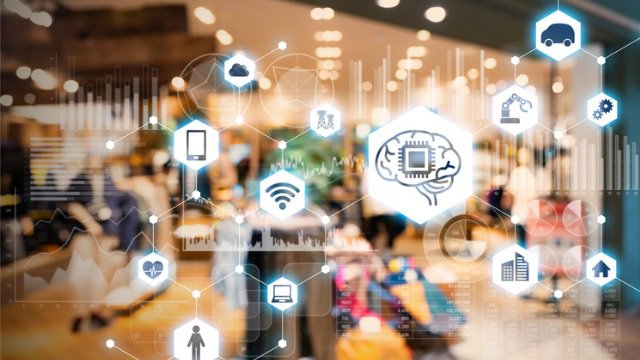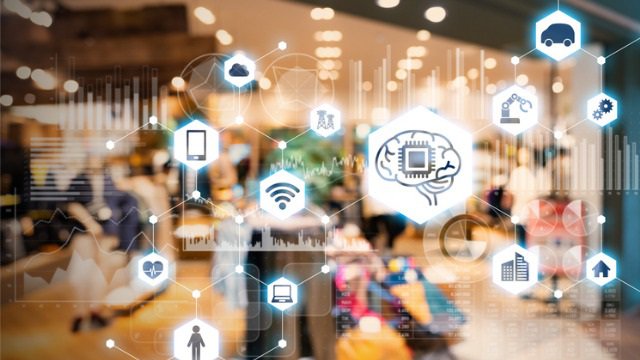Commentary

Photo by iStock.com
By Eric Schultz, vice president, business development, SGK
In many cases, as packaging enters the world of IoT, brands have failed to deliver valuable or relevant experiences. Often, we have seen technology implemented because it was possible, rather than to solve a genuine consumer or brand challenge.
There have been some false starts over the last few years. Smart packaging has relied on QR codes and simple AR gimmicks, while consumers lacked the apps and were often not sufficiently motivated to engage.
Now, we’re seeing the transition from basic connected packs to intelligent, media-enhanced packaging.
3 key characteristics
Here are three characteristics of successful connected experience design:
Interactive. It’s key for successful brands and retailers to make their experiences engaging, interactive and shareable. We’ve seen a clear opportunity in the beauty market with the increase in beauty video guides and subscription services. In a recent MindShare study, 54 percent of women would like to access cosmetic tutorials via smart packaging. While retailers like Sephora have dominated the “trial” POS model, others are still racing to catch up.
Informative. Another area of opportunity occurs in the grocery aisle — or in your household refrigerator, where more consumers express an interest in packs that send alerts when expiry is near. Connected packaging will create a hub of product information that can be tracked by smart fridges or scanners added to fridges/cupboards.
Trust is a huge driving factor of purchases and brands must be as clear as possible to align with consumer actions, beliefs and morals.
Incredible. While consumers continue to crave more information than what appears on pack, connected brand experiences lead to strategic opportunities. Brands have started directing the shopper to interactive social pages to engage on different platforms to promote things like online recipes, line extension coupons and giveaways.
Here are nine ways to increase consumer engagement with connected experience design:
1. Make your product mobile
We’ve seen great strides in the food and beverage sector, specifically in creating structural packaging innovations to cater to the ever-growing mobility of consumers.In a digital perspective, thinking mobile means linking the brand experience across all touch points — from social media to packaging. Consistency is crucial.
2. Embrace connected packaging technology
Imbued with sensors and connectivity through QR codes, virtual reality or augmented reality technology, connected packaging will be multifunctional and potentially offer a key product component.
3. Encourage product upgrades
Nobody wants to experience FoMo! “Freemium” and trial offers are great ways to introduce your users to new features of a product only accessed when upgraded.
4. Maximize impact across categories
According to a recent Bain & Company analysis of buying habits among 100,000 shoppers across the globe, “the best way brands can grow over the long term is to grow their numbers of buyers.” This sounds pretty obvious, right?
Oftentimes, brands make the mistake of limiting users to a narrow subset — often contained in the strict boundaries of their product sub-category. For many brands, this leaves room for a lot of untapped potential and growth.
5. Create highly personalized experiences
The old approach of packaging design — visual attraction, powerful emotion, and relevant narration — has moved more toward digital connection and personalized interaction.
With an updated PEO (paid, earned, owned) media model, the new creative technologies of VR and AR and beyond will add stimulating new opportunities for brands to engage in a more personalized way.
6. Innovate or be left behind
By monitoring conversations around competitors’ products, brands can use data-driven insights to help develop better product features or address repeated frustrations.
7. Leverage social causes
Many brands turn to cause-related marketing to establish shared values with their consumers. While campaign types vary, committing to a social cause may be a great purchase driver for consumers. For example, Soapbox Soaps operates as a “buy one, give one” model — with each purchase of a bar of their soap, one is donated to a community in need.
8. Form smart partnerships
We’ve seen many interesting partnerships in the retail space — all enhanced by the use of technology. Amazon recently partnered with Kohl’s to use the department store as a drop-off center for consumers looking to return products bought on Amazon. The pilot program also includes retail space for Amazon’s technology products, like Alexa to increase purchases.
9. Use data to evolve
According to a survey conducted by YouGov, consumers are willing to share personal data (email, age, location, etc.) for tangible benefits. “Nearly half (43 percent) of the more than 1,000 consumers surveyed agreed that they would exchange personal data with companies to save money through personalized promotions, discounts or deals, followed by 39 percent looking for speedier issue resolution.” This value exchange is accompanied by a stronger need for personalized experiences.
With more personal data being shared with brands, there is greater pressure for brands to exceed user and consumer expectations.
What consumers really wanted are tailored customer journeys.
Topics: Assisted Selling, Customer Experience, Technology
Sponsored Links:

